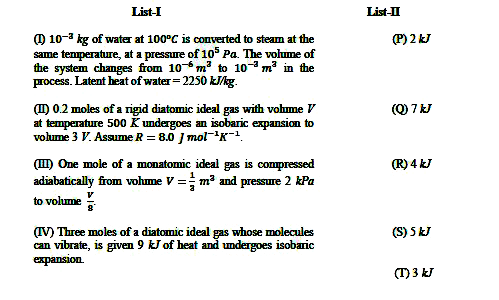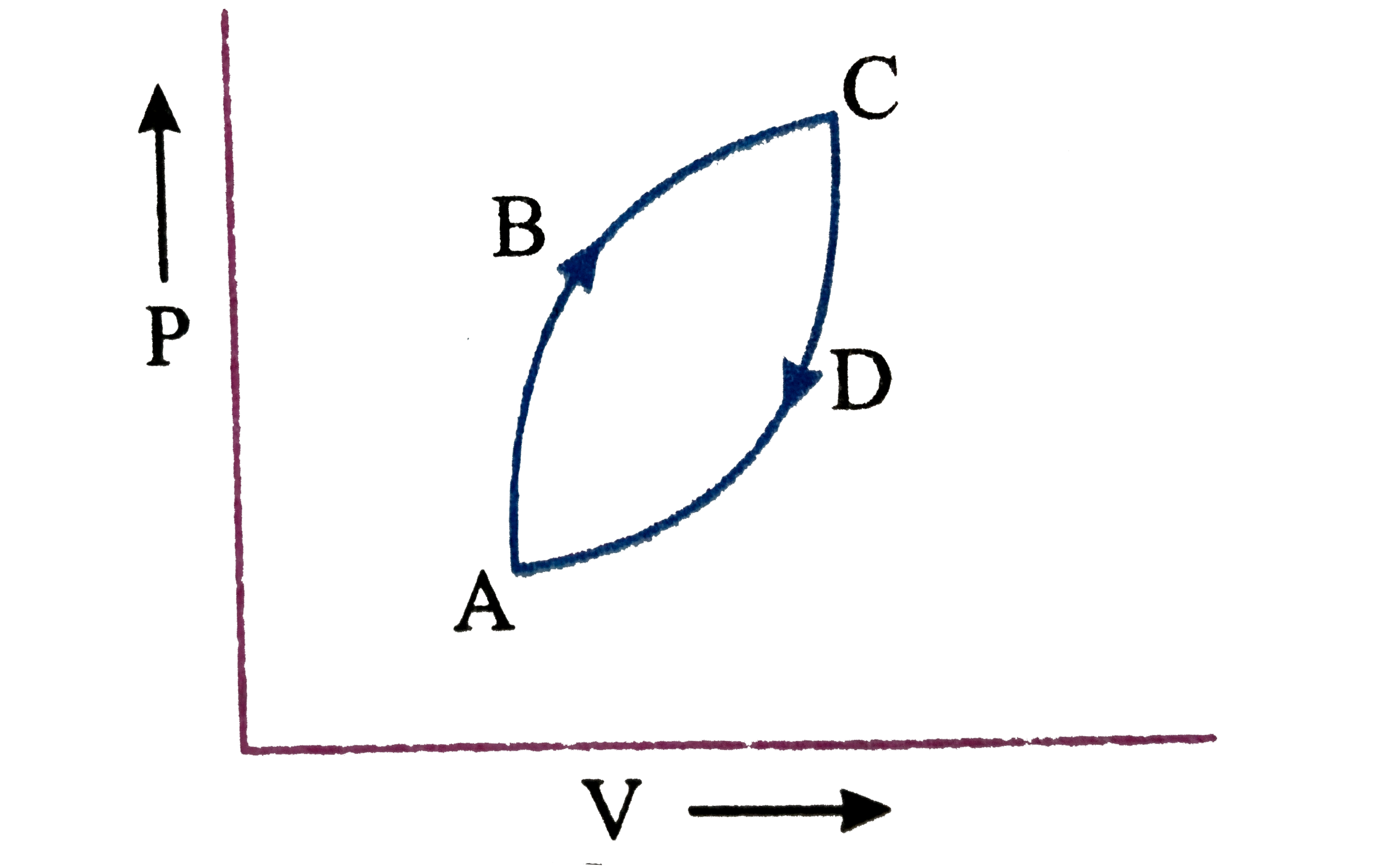List I describes thermodynamic processes in four different systems. List II gives the magnitudes (either exactly or as a close approximation) of possible changes in the internal energy of the system due to the process

Which one of the following options is correct?
I - T, II - R, III - S, IV - Q,
I - S, II - P, III- T, IV - P,
I - P, II - R, III - T, IV - Q.
I - Q, II - R, III - S, IV - T,
Step by step video & image solution for List I describes thermodynamic processes in four different systems. List II gives the magnitudes (either exactly or as a close approximation) of possible changes in the internal energy of the system due to the process Which one of the following options is correct? by Physics experts to help you in doubts & scoring excellent marks in Class 12 exams.
Updated on:21/07/2023Topper's Solved these Questions
- JEE ADVANCED 2022BOOK - JEE ADVANCED PREVIOUS YEARCHAPTER - JEE ADVANCED 2022EXERCISE - PHYSICS (SECTION-2)
6 Videos
- JEE ADVANCED 2021BOOK - JEE ADVANCED PREVIOUS YEARCHAPTER - JEE ADVANCED 2021EXERCISE - QUESTION
38 Videos
- MOCK TEST 2022 BOOK - JEE ADVANCED PREVIOUS YEARCHAPTER - MOCK TEST 2022 EXERCISE - QUESTIONS
18 Videos
Similar Questions
What is the change in the internal energy of a system over one complete cycle of a cyclic process?
View SolutionHeat equivalent to 50 joule is supplied to a thermodynamic system and 10 joule work is done on the system. What is the change in the internal energy of the system in the process ?
View Solution
Knowledge Check
In which of the following process (es), there is no change in the internal energy of the system?
AIsothermalBAdiabaticCFree expansionDCyclicFigure shows the P−V siagram of a cyclic process. If dQ is the heat energy supplied to the system, dU is change in the internal energy of the system and dW is the work done by the system, then which of the following relations is/are correct
 AdQ=dU−dWBdU=0CdQ=dWDdQ=−dW
AdQ=dU−dWBdU=0CdQ=dWDdQ=−dWThe work done in which of the following processes is equal to the internal energy of the system ?
AAdiabatic processBIsothermal processCIsochoric processDNone of the above
Apply first law of thermodynamics to show that the change in the internal energy of a system is equal to the heat given to or taken from the system in an ischoric process.
View SolutionThe work done in which of the following processes is equal to the internal energy of the system ?
View SolutionIf ΔU and ΔW represent the increase in internal energy and work done by the system resectively in a thermodynamical process, which of the following is true?
View SolutionIf ΔU and ΔW represent the increase in internal energy and work done by the system resectively in a thermodynamical process, which of the following is true?
View SolutionIn which of the following process the internal energy of a system remains constant ?
View Solution
